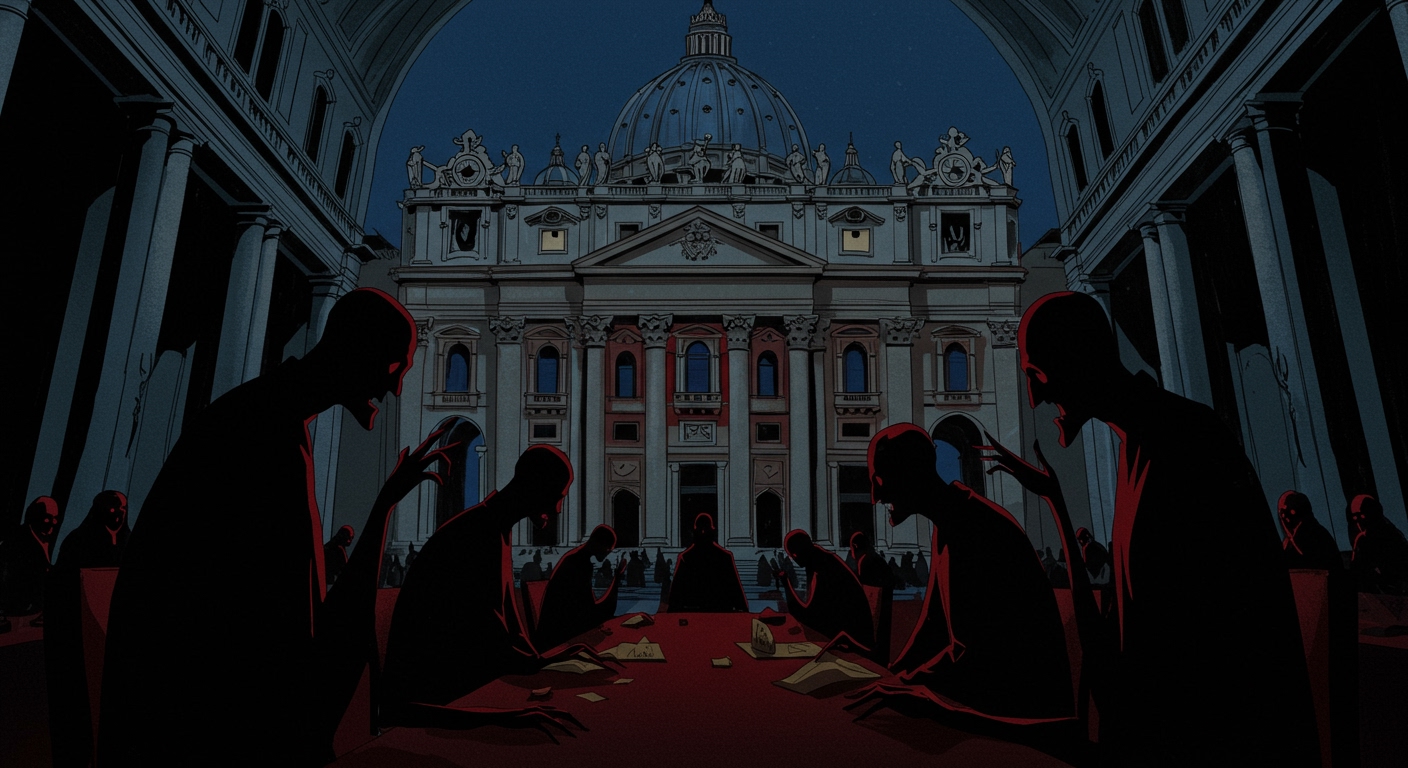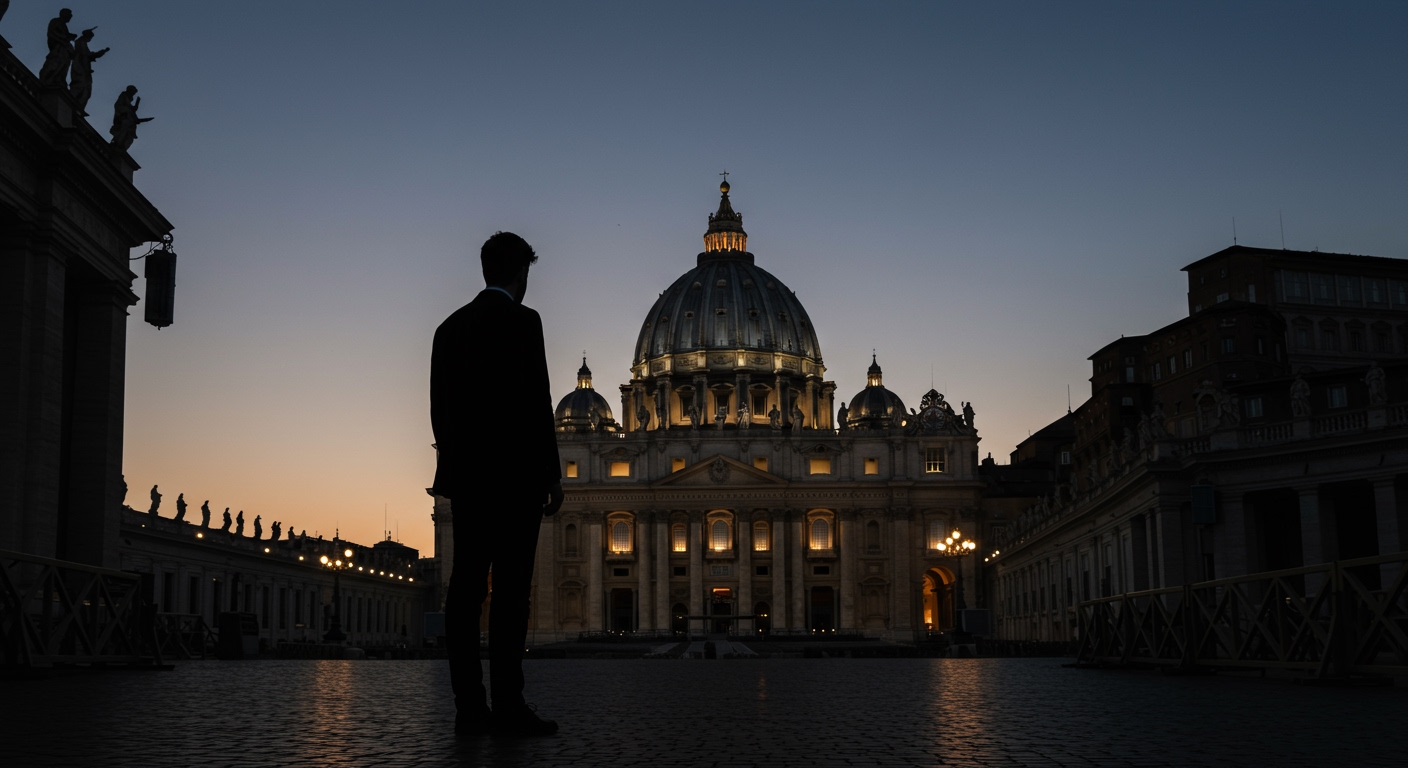Pope John Paul I’s incredibly brief papacy of just 33 days in 1978 ended with his sudden death, sparking decades of speculation, rumor, and fervent conspiracy theories. Dubbed ‘the Smiling Pope’ for his warm and humble demeanor, Albino Luciani’s unexpected demise has continued to fascinate and perplex, fueling debates about natural causes versus foul play. This article aims to delve into the various theories, examine the controversies surrounding the official Vatican account, and present the key arguments and evidence put forth by both proponents and debunkers of the mysterious death claims.
I. The Brief Papacy of John Paul I: A Man of Simplicity
A. Albino Luciani’s Background and Election
Albino Luciani, born in Forno di Canale, Italy, was known for his profound humility, pastoral sensitivity, and commitment to social justice long before his unexpected election to the papacy. He served as Bishop of Vittorio Veneto and later as Patriarch of Venice, earning a reputation for simplicity and approachability. His election on August 26, 1978, came as a surprise to many, following the death of Pope Paul VI. Luciani, who took the unprecedented name John Paul in honor of his two immediate predecessors, was seen as a reformer, a compassionate leader, and a stark contrast to the more traditional cardinals. His gentle nature and pastoral focus were widely welcomed by the faithful [1].
B. The ‘Smiling Pope’ and His Initial Reforms
During his brief pontificate, Pope John Paul I immediately captivated the world with his endearing smile and informal style, breaking from centuries of Vatican protocol. He refused the traditional papal tiara, opting for a simple pallium, and spoke in a direct, engaging manner that resonated with ordinary people. His intentions for reform were clear: he spoke of simplifying the papacy, promoting collegiality within the Church, and addressing issues of poverty and social inequality. Critically, there were indications he intended to investigate and potentially reform the opaque financial dealings of the Vatican Bank (Institute for the Works of Religion, IOR), a powerful institution with a history of controversy [5]. These initial actions and rumored intentions, though brief, set the stage for the dramatic events that followed.
II. The Official Vatican Account and Initial Discrepancies
A. The Discovery of the Body and Cause of Death
The world was stunned on September 29, 1978, when the Vatican announced the sudden death of Pope John Paul I. The official account stated that he had died of a heart attack (myocardial infarction) in his sleep. His body was reportedly discovered by his papal secretary, Father John Magee, who found him in his bed, holding several documents. The news sent shockwaves globally, not only because of the brevity of his papacy but also due to the seemingly robust health he appeared to enjoy [4]. The initial announcement sought to quickly provide clarity, yet it inadvertently opened the door to a cascade of questions.
B. Contradictory Reports and the Lack of Autopsy
Almost immediately, discrepancies began to emerge from the Vatican’s official narrative, fueling early suspicions about Pope John Paul I’s death. The most glaring contradiction concerned who discovered the body. While the Vatican initially stated Father John Magee, it was later revealed that Sister Vincenza Taffarel, one of the nuns who attended to the papal apartments, had actually found him first. She had gone to bring him coffee and found him unresponsive. Furthermore, the Vatican’s swift decision not to perform an autopsy on the deceased pontiff, citing historical precedent and canon law, became a major point of contention. In an era where medical examination was standard practice for sudden deaths, this refusal seemed to obscure rather than clarify, leaving ample room for speculation [7].
C. Vatican’s Rationale for Discrepancies and No Autopsy
The Vatican attempted to explain the initial misreporting and the absence of an autopsy. They argued that the discrepancy regarding Sister Vincenza’s discovery was to avoid the perceived scandal of a nun being found in the papal bedroom, an attempt to protect the Church’s image. Regarding the autopsy, the rationale was that papal autopsies were not customary, and the Pope’s personal physician had certified the death as a heart attack. However, these explanations were often met with skepticism by the public and media, who saw them as clumsy attempts at damage control rather than transparent answers. The lack of a definitive medical examination, coupled with the initial inconsistencies, left a lasting impression of secrecy and contributed significantly to the burgeoning conspiracy theories [6].
III. Major Conspiracy Theories: Accusations of Foul Play
A. The Vatican Bank Scandal and Financial Corruption Theory
Perhaps the most enduring and widely publicized theory surrounding Pope John Paul I’s mysterious death links it directly to his alleged plans to expose vast financial corruption within the Vatican. David Yallop’s sensational 1984 book, In God’s Name, popularized this narrative, suggesting the Pope was murdered because he threatened to uncover a web of illicit dealings involving the Vatican Bank (IOR), its president Archbishop Paul Marcinkus, and the disgraced Banco Ambrosiano, led by Roberto Calvi (later found dead in London under suspicious circumstances). Yallop argued that John Paul I was preparing to make significant personnel changes and launch investigations that would have implicated powerful figures, making him a target [2].

B. Masonic Lodge P2 and Mafia Involvement
Closely intertwined with the financial corruption theory is the alleged involvement of the secret Italian Masonic lodge P2 (Propaganda Due) and organized crime, specifically the Mafia. P2, led by Licio Gelli, had deeply infiltrated Italian political and financial institutions, including the Vatican Bank. Roberto Calvi, the “God’s Banker” of Banco Ambrosiano, was a member of P2, and the lodge was implicated in numerous scandals. Proponents of this theory suggest that John Paul I’s reforms would have dismantled the lucrative connections between the Vatican, P2, and the Mafia, leading these powerful, ruthless groups to orchestrate his assassination to protect their interests [9].
C. Political Motivations: CIA, KGB, and Curial Opposition
Other theories suggest broader political motivations behind Pope John Paul I’s death. Some speculate about the involvement of intelligence agencies like the CIA or KGB, perhaps due to the Pope’s stance on Cold War politics or his potential impact on global alliances. More frequently discussed, however, are theories of opposition from conservative elements within the Curia. John Paul I’s progressive leanings, his questioning of traditional doctrines (such as contraception), and his intention to replace powerful cardinals with those who shared his vision for a simpler Church, could have created formidable enemies within the Vatican itself. These factions, it is argued, might have seen his removal as necessary to preserve their power and influence [8].
D. Poisoning and Cover-up Allegations
If foul play was involved, the method of murder and subsequent cover-up are also central to the conspiracy theories. Claims of poisoning are common, with substances like Valium (to induce a heart attack) or cyanide being suggested. Allegations include that the Pope’s personal medications were tampered with, or that he was given a fatal dose of a sedative. Furthermore, it is claimed that evidence was removed from the papal apartments, witnesses were silenced, and the body was hastily embalmed to prevent any forensic examination that might reveal the true cause of death. These allegations paint a picture of a meticulously planned assassination and a subsequent, coordinated effort to obscure the truth [10].
IV. Counter-Arguments and Natural Death Explanations
A. John Cornwell’s ‘A Thief in the Night’ and the Human Factor
Challenging the sensational claims of David Yallop, journalist John Cornwell’s 1989 investigative book, A Thief in the Night: The Death of Pope John Paul I, offered a compelling counter-narrative. Cornwell conducted extensive research, interviewing Vatican insiders, family members, and medical professionals. He concluded that Pope John Paul I died a natural death, likely a pulmonary embolism, exacerbated by immense stress, overwork, and a personal tendency to neglect his own health. Cornwell meticulously dismantled many of Yallop’s specific allegations, arguing that the Pope was a deeply private and somewhat naive man overwhelmed by the pressures of his office, rather than a target of powerful conspirators [12].

B. Medical History and Health Issues of Pope John Paul I
Evidence supporting a natural death theory often points to Pope John Paul I’s pre-existing health conditions. He had a history of circulatory problems, including a retinal thrombosis in 1975, and had suffered from swollen ankles. More critically, accounts from his family and close associates indicate he had complained of chest pains shortly before his death. Despite these symptoms, he was known to be reluctant to seek medical attention, often downplaying his ailments. The immense stress of the papacy, particularly for a man of his humble background and sensitive nature, combined with a heavy workload, could have severely impacted his cardiovascular system, making a sudden heart attack or pulmonary embolism a plausible medical explanation [13].
C. Recent Revelations and Vatican Documents
More recent publications have further reinforced the natural death theory, drawing on newly accessible Vatican documents and testimonies. Stefania Falasca’s 2017 book, Pope Luciani, Chronicle of a Death (also published as The September Pope: The Final Days of John Paul I), presents a detailed account based on official records, medical reports, and interviews with those who were present. Falasca’s work, which received the endorsement of the Vatican, corroborates the heart attack diagnosis and clarifies many of the earlier ambiguities. It suggests that the initial discrepancies were due to a combination of shock, miscommunication, and a desire to protect the privacy of the deceased and those around him, rather than a deliberate cover-up [4].
V. The Enduring Legacy of the Mystery
A. Why the Theories Persist: Public Skepticism and Vatican Secrecy
Despite numerous investigations and counter-arguments, the conspiracy theories surrounding Pope John Paul I’s death continue to persist. This longevity can be attributed to several factors. The initial mismanagement of information by the Vatican, with its contradictory statements and refusal of an autopsy, created a fertile ground for public skepticism. Historically, the Catholic Church has faced accusations of secrecy and opacity, leading to a general distrust of official narratives. The dramatic nature of the events – a “Smiling Pope” dying mysteriously after just 33 days, intertwined with powerful financial scandals and secret societies – also makes for a compelling story that resonates deeply with those interested in historical mysteries and true crime [6].
B. Impact on Pope John Paul I’s Historical Image and Beatification
The “mysterious death” narrative has undeniably shaped public perception of Pope John Paul I, sometimes overshadowing the brief but significant impact of his papacy. His image is often seen through the lens of a tragic figure, a potential reformer silenced by powerful forces, rather than solely as the humble “Smiling Pope.” This narrative has also played a role in his ongoing cause for sainthood (beatification). While the Vatican’s official stance is a natural death, the lingering questions occasionally resurface, though they have not ultimately impeded the beatification process, which focuses on his virtues and holiness during his life and pontificate [11].
C. The Quest for Truth: Can the Mystery Ever Be Fully Resolved?
The passage of time, the lack of an autopsy, and the differing interpretations of available evidence make a definitive, universally accepted resolution to the mystery of Pope John Paul I’s death increasingly unlikely. While proponents of natural death theories present strong medical and circumstantial evidence, the initial Vatican missteps and the sheer audacity of the conspiracy claims continue to fuel debate. The quest for truth remains, with each new book or document adding another layer to a story that, for many, still feels incomplete. Whether the truth lies in a tragic natural event or a meticulously planned assassination, the enigma endures.

Conclusion: A Pontificate Shrouded in Enigma
The sudden and unexpected death of Pope John Paul I after a mere 33 days in office remains one of the most intriguing and debated events in modern Vatican history. On one side, the official Vatican narrative, increasingly supported by recent investigative journalism and newly available documents, points to a natural death, likely a heart attack, exacerbated by stress and pre-existing health conditions. On the other, a powerful array of conspiracy theories, popularized by authors like David Yallop, suggests foul play, linking his demise to his alleged efforts to expose deep-seated financial corruption within the Vatican Bank, involving figures like Roberto Calvi, Paul Marcinkus, and secret societies like P2. Despite official explanations and counter-investigations, the initial inconsistencies from the Vatican, coupled with the dramatic nature of the accusations, have ensured that the mysterious death of Pope John Paul I continues to fuel discussion and historical inquiry, cementing his pontificate as one forever shrouded in enigma.



